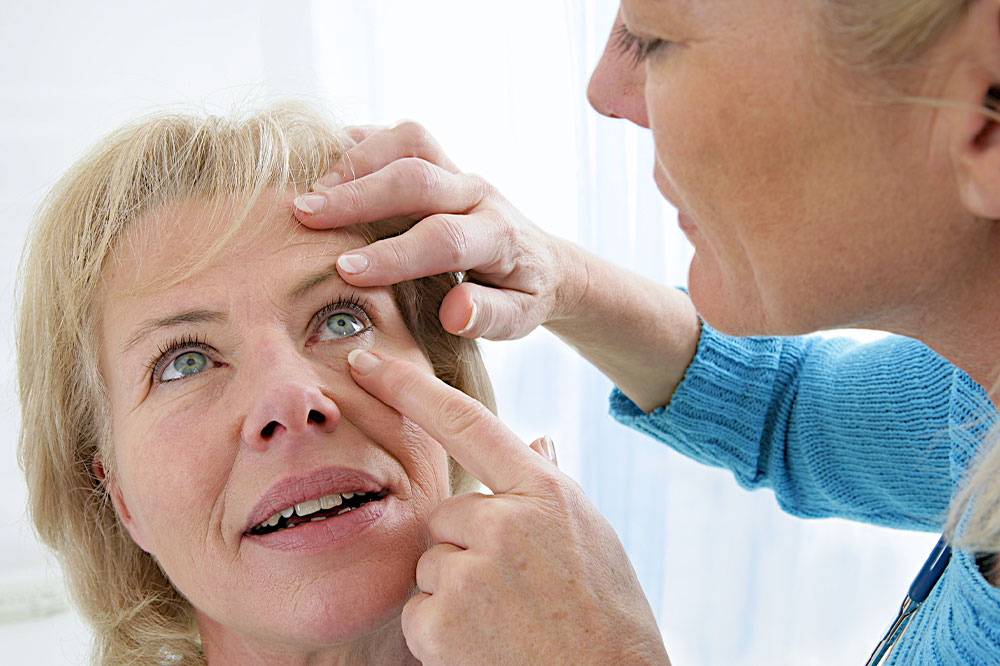
Tips to Manage Age-related Macular Degeneration
Age-related macular degeneration (AMD) is a condition threatening one’s eyesight and general health. In AMD, the macula, the part of the eye that helps produce the most detailed and sharpest vision, starts to break down and thin, resulting in vision loss. It is one of the most prevalent causes of blindness in people aged 60 or older. Though there is no definite cure for AMD, some things can postpone its onset or lower its severity.
Being aware of family history
Family history and genetics are one of the leading causes of AMD. So, if you have a first-degree relative with AMD, your chances of developing it are also higher. Hence, you must be vigilant and educate yourself on the potential AMD signs, such as the inability to adapt to low light conditions, difficulty identifying faces, and straight lines looking wavy. Knowledge of these symptoms can help you reach out to an ophthalmologist and get timely treatment while AMD is still in an early stage.
Getting routine comprehensive medical checkups
In the early stages of AMD, you might not experience any symptoms. Hence, routine comprehensive eye exams with an ophthalmologist can help with timely diagnosis and treatment. It holds even for adults 40 or older with no risk factors or signs because this is when you may develop early AMD symptoms or experience changes in vision. After 65, consider increasing the frequency of eye examinations and get one every one to two years, even if you do not have any suggestive symptoms.
Taking supplements
A study found that supplementation with some micronutrients can lower AMD aggravation from the intermediate to the advanced stage by approximately 25%. In the market, one can find several vitamins sold over the counter claiming to help with AMD or eye-related diseases. If your eye doctor finds yellow spots on the retina in the eye dilation examination, they may prescribe them. But make sure you pick the ones that specify the AREDS2 formula on their label. These vitamins can help people with drusen or yellow spots on the retina. Thus, people who do not have drusen or only a few of them, should not opt for these vitamins because their susceptibility to developing age-related macular degeneration is less, especially over the next five years.
Maintaining a healthy blood pressure
High blood pressure or hypertension amplifies the risk of developing AMD. It delays blood to the choroid or the eye’s vascular layer, and the loss of oxygen to the eye speeds up AMD progression. Further, it doubles the susceptibility to developing central vision loss and wet AMD. Reports suggest that angiotensin II receptor blockers (ARBs), angiotensin-converting enzyme (ACE) inhibitors, and beta-blockers can also help with AMD. It lowers the susceptibility of intermediate and early dry AMD by approximately 25% and wet AMD by 23%. The success rate increases by administering these antihypertensive treatments in combination instead of independently.
Eating plenty of greens
Dark, leafy green vegetables can also help keep AMD at bay. A study concluded that people who ate maximum vegetables with zeaxanthin and lutein carotenoids had a 43% reduced risk of developing age-related macular degeneration than those who did not consume enough of them. Some of the leafy greens you must eat are kale, raw spinach, and collard greens. Reports also suggest that a high intake of collard greens or spinach can significantly reduce the risk of developing AMD, especially wet or advanced AMD, which is its most visually disabling version.
Wearing sunglasses to guard your eyes
Sun radiates harmful ultraviolet rays. These wavelengths are not visible to the naked human eye but can inflict sunburn. In addition, extended exposure to UV rays is also dangerous to the eyes, resulting in short-term and long-term complications. The inability to see after shoveling snow or spending time on the slopes is a prevalent short-term damage example. It is known as snow blindness, resulting from the UV rays reflecting off the snow and ice. It is pertinent to note that you will not realize you are experiencing snow blindness till you go indoors. However, it will fade in a few hours since it is short-term. On the contrary, long-term damage occurs because of many years of sun exposure. It results in health conditions like age-related macular degeneration and cataracts. Thus, to shield your eyes against harmful UV rays, it is advised to wear protective sunglasses every time while stepping outdoors. You can team it with a brimmed hat for added protection.
Shortening screen time
Using tablets, smartphones, PC, and laptops to stream movies/shows, connect with family and friends, play games, and work is a part of many people’s daily routines. But staring at the screen for long hours can cause dry eyes, blurry vision, and eye strain. So, take regular breaks when using these electronic devices. Try the 20-20-20 rule that suggests you must look away to twenty feet for twenty seconds after a twenty-minute screen time. It is a quick exercise but goes a long way in lowering the strain your eyes experience. At any time, if you experience severe eye discomfort, you must immediately consult an eye specialist for timely intervention.
Keeping a check on your eyesight with the Amsler Grid test
It is a simple test that will not take over a minute but can help those with AMD lower the risk of losing their sight further. The Amsler Grid is a square-shaped grid that can help detect early indicators of retinal disease and track vision changes. With this grid, one can identify vision changes that may not be apparent and consult your doctor. Here is how it works-
- Print the Amsler grid from the web.
- Hold it approximately a foot away from your face.
- Cover one of your eyes.
- Focus on the dot in the grid’s center.
- Check if any horizontal or vertical line appears wavy or blurry or does any area look lighter or darker than the remaining boxes on the grid.
- Repeat this activity with the other eye.
One can take this test once every week or even daily. One must schedule an eye dilation test anytime one notices vision changes or irregularities on the grid.





